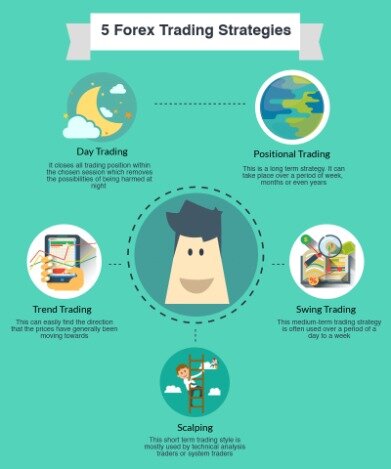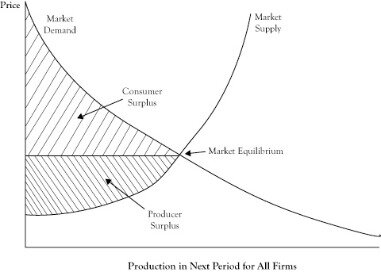
For listed securities, a stop order to buy becomes a market order when a trade occurs at or above the stop price. A stop
order to sell becomes a market order when a trade in the security occurs at or below the stop price. Be sure to check if this option is available at your brokerage firm and how they define prices so you know when your order would execute. You can either sit and watch to see if price moves lower and then enter, or create a buy limit.
Nicole Kidman’s out of touch act – news.com.au
Nicole Kidman’s out of touch act.
Posted: Mon, 15 May 2023 04:07:37 GMT [source]
Other stop orders include sell-stop orders, stop market, and stop-limit orders. A stop order is an order to buy or sell a stock at the market price once the stock has traded at or through a specified price (the “stop price”). If the stock reaches the stop price, the order becomes a market order and is filled at the next available market price. A limit order is an order to buy or sell a stock with a restriction on the maximum price to be paid (with a buy limit) or the minimum price to be received (with a sell limit).
Nothing on this website should be considered an offer, solicitation of an offer, or advice to buy or sell securities or investment products. Any historical returns, expected returns, or probability projections are hypothetical in nature and may not reflect actual future performance. Account buy stop price holdings and other information provided are for illustrative purposes only and are not to be considered investment recommendations. The content on this website is for informational purposes only and does not constitute a comprehensive description of Titan’s investment advisory services.
For how long are day orders good?
If there’s a drop and someone sells at or below $22, this triggers your order. This means that the order becomes a market order and you can sell at the next price available. The strategies described above use the buy stop to protect against bullish movement in a security. Another, lesser-known, strategy uses the buy stop to profit from anticipated upward movement in share price.
Even if the limit price is available after a stop price has been triggered, your entire order may not be executed if there wasn’t enough liquidity at that price. For example, if you wanted to sell 500 shares at a limit price of $75, but only 300 were filled, then you may suffer further losses on the remaining 200 shares. Similarly, you can set a limit order to sell a stock when a specific price is available. Imagine that you own stock worth $75 per share and want to sell if the price gets to $80 per share.
Further information regarding specific transactions is available upon written request. After the limit price is triggered, the security’s price may continue to rise or fall. As a result, your order may or
may not execute depending if the security’s price in relation to your specified limit price is too great. Bear in mind that
your order may execute at a price more or less than your specified limit price. Limit orders are also subject to the existence
of a market for that security.
A market order is an order to buy or sell a stock at the market’s current best available price. A market order typically ensures an execution, but it doesn’t guarantee a specified price. Market orders are optimal when the primary goal is to execute the trade immediately. A market order is generally appropriate when you think a stock is priced right, when you are sure you want a fill on your order, or when you want an immediate execution.
In a short sale, investors borrow shares from a lender (brokerage, bank, etc.) for a certain period of time, and sell the shares in the open market. They bet the price will decline in the time period, and they can buy the same number of shares at a lower price before returning them to the lender. They would profit from the difference between the sale price and the cheaper repurchase price.On the other hand, if the share price starts rising, that can diminish or erase investors’ short-sale profit.
Buy Limit
Thus, even if the stock moves in the opposite direction, the trader stands to offset her losses. The short seller can place their buy stop at a stop price, or strike price either lower or higher than the point at which they opened their short position. If the price has declined significantly and the investor is seeking to protect their profitable position against subsequent upward movement, they can place the buy stop below the original opening price. An investor looking only to protect against catastrophic loss from significant upward movement will open a buy stop order above the original short sale price. When you place a limit order to buy, the stock is eligible to be purchased at or below your limit price, but never above
it.
If the trigger price of 83 is reached, but the stock price continues to fall below 83,
the order is not considered for execution. An investor can execute a stop-limit order on their trades through their investment brokerage firm, though not all brokerages may offer this option. Additionally, brokerages may have different definitions for determining if a stop or limit price has been met. The stop price you set triggers the execution of the order and is based on the price at which the stock was last traded.
Capitalize on Future Price Appreciation
It helps traders control the purchase price of stock once they’ve determined an acceptable maximum price per share. A stop price and a limit price are then set once the trader specifies the highest price they are willing to pay per stock. The stop price is a price that is above the market price of the stock, whereas the limit price is the highest price that a trader is willing to pay per share. Let’s say a trader wants to invest in the stock of Company A. The stock trades at $10 per share but they believe that stock will drop down to their desired limit of $8. A few days later, the price drops below the $8 limit, which means the trader can purchase shares until the price reaches the limit. A stop-limit order provides greater control to investors by determining the maximum or minimum prices for each order.
Its banking subsidiary, Charles Schwab Bank, SSB (member FDIC and an Equal Housing Lender), provides deposit and lending services and products. Access to Electronic Services may be limited or unavailable during periods of peak demand, market https://trading-market.org/ volatility, systems upgrade, maintenance, or for other reasons. The information provided here is for general informational purposes only and should not be considered an individualized recommendation or personalized investment advice.
Like any limit order, a stop limit order may be filled in whole, in part, or not at all, depending on the number of shares
available for sale or purchase at the time. The specialists on the various exchanges and market makers have the right to refuse
the orders under certain market conditions. A sell stop limit order for a listed security placed at 83 is triggered
at 83, at which point the order becomes a limit order. The stock would have to trade at 83 again for the sell stop limit order to
be considered for execution at 83 or better.
When an investor places a stop-limit order, they are required to specify the duration when it is valid, either for the current market or the futures markets. The stop order techniques are popular in stocks, derivatives, and forex markets. In the case of stocks, a stop order from the investor instructs the brokers to buy or sell a stock at the market price once the stock has reached the specified stop price.

A stop limit order automatically becomes a limit order when the stop limit price is reached. Like any limit order, a stop
limit order may be filled in whole, in part, or not at all, depending on the number of shares available for sale or purchase
at the time. Company news or market conditions which significantly affect the price of a security could prevent a stop limit order
from being executed if the price of the security moves through your stop limit price. When you place a stock trade, you can set conditions on how the order is executed, as well as price restrictions
and time limitation on the execution of the order.
The most common types of orders are market orders, limit orders, and stop-loss orders. These orders give retail investors plenty of opportunity to control their forward-looking actions in an environment where prices are appreciating. A buy stop order can help bulls and bears alike navigate future price uncertainties.
They could be exposed to large losses if the market price climbs above the short-sale price. To lock in some profit, they could place a buy stop order with a broker at a price below the short-sale price. A sell stop order is entered at a stop price below the current market price. If the stock drops to the stop price (or trades below it), the stop order to sell is triggered and becomes a market order to be executed at the market’s current price. If a stock is trading at $15 per share, the stop price and the limit price will be a price above the current market price, like a stop price of $17 and a limit price of $18.
When you place a limit order to sell, the stock is eligible to be sold at or above your limit price, but never below it. Although a limit order enables you to specify a price limit, it does not guarantee that your order will be executed. You should
monitor your orders when the new issue starts to trade in the secondary market. You should use caution when placing market orders, because the price of securities may change sharply during the trading
day or after hours. During periods of heavy trading or volatility, real-time quotes may not reflect current market prices or
quotes. Carefully review the order information and quote provided on the Trade Stocks Verification page before sending your
order to the marketplace.
- The stock would have to trade at 83 again for the sell stop limit order to
be considered for execution at 83 or better. - Before investing in such Third Party Funds you should consult the specific supplemental information available for each product.
- An investor is willing to open that short position to place a bet that the security will decline in price.
- If a trend reversal or an uptrend is anticipated or starts to emerge, the investor can place an order to buy to limit the losses due to price rise.
Sometimes, it’s smart to adjust or cancel them, depending on the current behavior of a stock price. If and when salesforce.com, Inc. breaks out into a bullish run, you’ll capitalize on the price at $242. Your broker will automatically execute the order for 50 shares as soon as the price broaches $242. It doesn’t matter how high the price goes that day (or if it falls again), you’ll be in at the $242 price point. A buy stop order allows investors to specify a price point above the current price of a security, at which they want to purchase it.
A buy stop is the opposite of a stop-loss order, which is triggered by a declining price. A sell stop limit is a conditional order to a broker to sell the stock when its price falls up to a specific price – i.e., stop price. A sell stop price has two price components – i.e., a stop price and a limit price.
Lascia un commento